Types Of Tooth Movement Important Notes
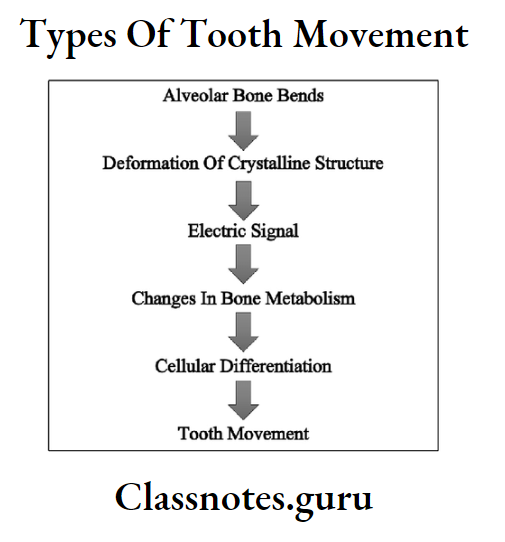
- Couple
- It is a pair of parallel forces having equal magnitude acting in opposite direction
- Brings about pure rotation
- Center of resistance

- Center of rotation in different movement
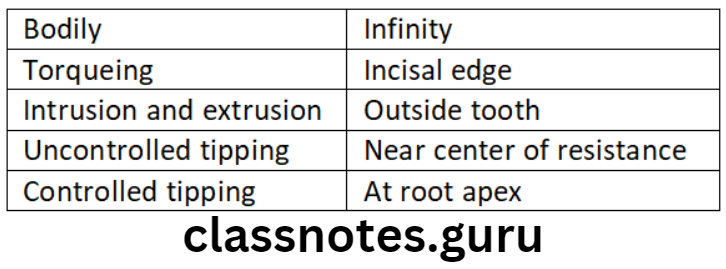
- Types of tipping

- Types of forces

Types Of Tooth Movement Long Essays
Question 1. Define optimum force. Classify and discuss Orthodontic forces.
Answer.
Optimum Orthodontic Force
- It is a force that rapidly moves teeth in the desired position with minimum damage to adjacent tissues and with less discomfort to the patients
- Value – According to Oppenheim and Schwarz, it is equal to capillary pressure i.e. 20-26gm/cm2
Orthopaedic Force.
- It is defined as an act upon a body that changes/tends to change the state of rest or uniform motion of that body
- It has definite magnitude, specific direction, and point of application.
Value – In grams
Generated by – Orthodontic appliances
Significance – Orthodontic treatment depends on it
Types Of Optimum Forces:
Continuous Force:
- Active force
- Decreases little in magnitude between appointment periods
- Example Light wire appliance
- Requirement:
- Components must be highly flexible
- Activation must be of low force level
- Results:
- Direct resorption of root socket
- No occlusion of blood vessels
- No sacrifice of nutritional supply
- No rest period
- Soft tissue tolerance
Read And Learn More: Orthodontics Short And Long Essay Question And Answers
Intermittent Force:
- Active force
- Declines to zero magnitudes before next appointment
- Example Removable active plates
- Requirements:
- High stiffness of components
- Initial activation – twice the expected
- Results:
- Greater force on teeth
- Undermining resorption
- Repair of necrosed soft tissue
- Resumption of blood supply
Interrupted Force:
- Inactive between appointment intervals
- Has cyclic, long-term magnitude time pattern
- Ex. Extra oral appliance
- Requirements:
- Should exert heavy forces
- No decay
- Have specific magnitude – time pattern
- Have sufficient inactive period

Types Of Tooth Movement Short Essays
Question 1. Tooth Movement.
Answer.
It is a unique process in which a tooth is made to move through bone.
Types Of Tooth Movement:
Tipping:
- It is a type of tooth movement where a single force is applied to the crown resulting in the movement of the crown in the direction of force and the root in the opposite direction.
- Controlled Tipping:
- Tooth tips about the center of rotation at its apex.
- Uncontrolled Tipping:
- The Centre of rotation occurs apical to & very close to the center of resistance.
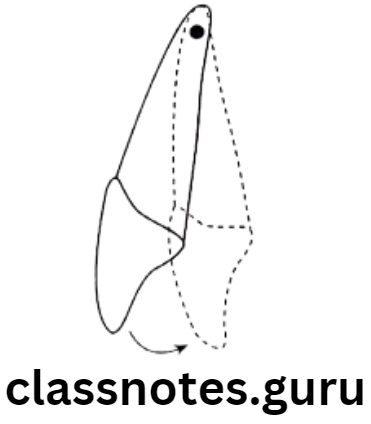

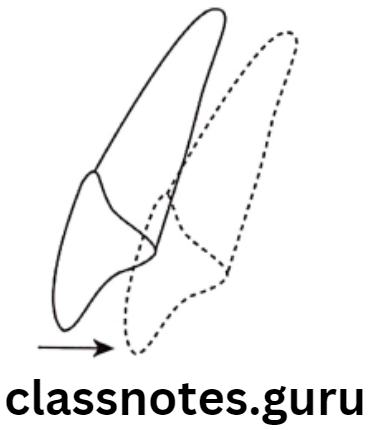
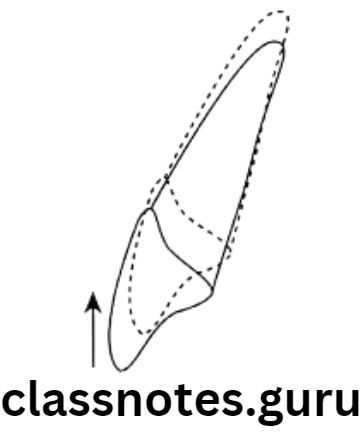
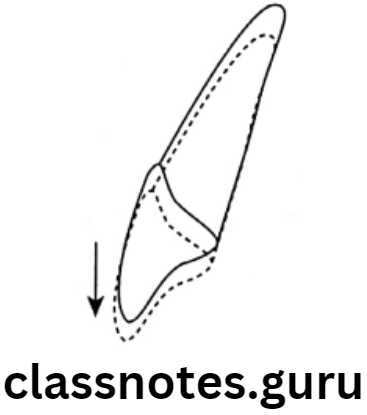
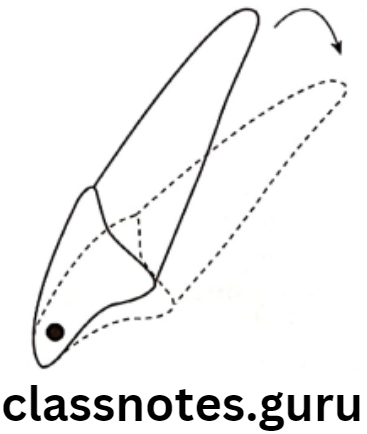

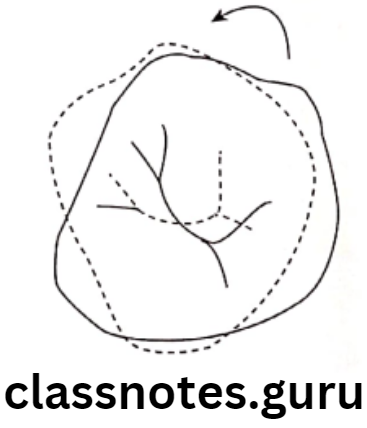
Types Of Tooth Movement Short Questions And Answers
Question 1. Force and Couple.
Answer.
Force: It is defined as an act upon a body that changes/tends to change the state of rest or uniform motion of that body
- Expressed in grams
Couple: It is a pair of concentrated forces having equal magnitude and opposite direction with parallel but non-collinear lines of action
- Example. Pure rotation
Question 2. Intrusion.
Answer.
- Intrusion is defined as the axial movement of the tooth along the long axis toward the apex of the root
- This tooth movement requires minimum force and the center of rotation passes through the center of resistance
- 10-20g of force is required the periodontal ligament at the apex is compressed over a small area and no area of tension exists
Question 3. Tipping movement.
Answer.
It is a type of tooth movement where a single force is applied to the crown resulting in the movement of the crown in the direction of force and root in the opposite direction.
- Controlled Tipping
- Tooth tips about the center of rotation at its apex.
- Uncontrolled Tipping
- The Centre of rotation occurs apical to & very close to the center of resistance.
Question 4. Moment of force.
Answer.
Definition Of Moment of force
- It is defined as the measure of rotational potential of a force concerning a specific axis
- It is a tendency for a force to produce rotation
Calculated by
- Moment = Magnitude of force x distance
- Unit
- Gram millimeters
- Factors determining it
- Magnitude of force
- Distance from the center of resistance
Types Of Tooth Movement Viva Voce
- The center of rotation is the variable point
- The center of resistance is a fixed point
- Tipping is tooth movement around the mesiodistal axis
- Torqueing is tooth movement around fac-io-lingual axis
- Rotation is tooth movement around the long axis of the tooth
- Couple brings about pure rotation
- The unit of measurement of moment of force is gram millimeters
- The center of rotation during intrusion and extrusion is outside the tooth
- The center of resistance in the multi rooted tooth is located at 1-2mm apical to furcation
